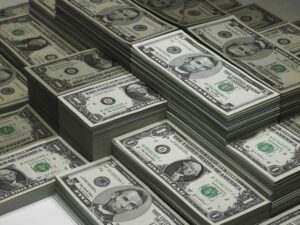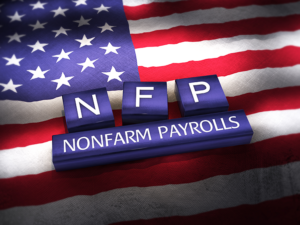Dollar Weakens as U.S. Presidential Election Looms, Markets Brace for Possible Volatility
On Tuesday, the U.S. dollar softened as traders adjusted their positions ahead of the U.S. presidential election. A recent shift in polls dented some market assumptions about a Republican victory for Donald Trump, leading to fluctuations across global financial markets. Meanwhile, Kamala Harris, the Democratic candidate, experienced improving odds on various betting platforms, with PredictIt showing her in the lead, though Trump remained a favorite on Polymarket.
In recent weeks, market trends and betting data heavily leaned towards a Trump win. Analysts often link Trump’s policies, particularly around tariffs and immigration, with inflationary pressures, which typically lead to rising U.S. Treasury yields and a stronger dollar. However, a weekend poll indicating a Harris lead in the traditionally Republican state of Iowa saw the dollar slump against the euro, losing as much as 0.76% to a three-week low.
Dollar Index Dips as Euro Gains Traction
The dollar index, measuring the greenback against six key currencies, edged down to 103.89 by 06:18 GMT on Tuesday, slightly recovering from Monday’s drop to 103.67. This marked the index’s first dip to that level since October 21, a reversal from last week’s high of 104.63. The euro rose to $1.0879, following Monday’s peak of $1.09145, the highest since mid-October.
Sterling also experienced a mild uptick, reaching $1.2959, while the dollar weakened against the yen, trading at 152.34 after slipping to a one-week low of 151.54 overnight.
Market Sentiment Shifts Toward Harris Win
Financial strategist Carol Kong from the Commonwealth Bank of Australia noted that markets are positioning for a Harris win. “The USD may drop modestly by 1%-2% if Harris secures a victory, while a Trump win could bolster it,” Kong commented. She added that any delays or disputes in vote counting could further amplify currency volatility in the short term.
A clear election outcome may not emerge immediately, and Trump has hinted at challenging any unfavorable result, recalling the protracted 2020 election outcome.
Bitcoin and Cryptocurrencies Benefit from Election Dynamics
Bitcoin rose 2.2% to approximately $68,542 after briefly dipping to a one-week low of $66,776.19. Analysts generally view Trump as more favorable for cryptocurrencies, suggesting that a Trump win could be a bullish signal for Bitcoin and other digital assets.
Analysts at TD Securities suggested that a Trump victory or a Republican majority (“Red Wave”) would likely strengthen the dollar, while a “Blue Wave” win for Harris could weaken it. However, they clarified that a Harris presidency might bring a more balanced impact on the USD by focusing on macroeconomic stability.
Key Rate Decisions from Major Central Banks Expected This Week
The Federal Reserve is set to announce its latest policy update on Thursday, with markets anticipating a rate cut of 25 basis points. Analysts will be watching closely for any indicators of a potential December pause, especially after last week’s disappointing jobs report, which showed a weaker-than-expected labor market in October.
Meanwhile, the Bank of England and Sweden’s Riksbank are expected to cut rates by 25 and 50 basis points, respectively, while Norway’s Norges Bank is expected to maintain current rates.
RBA Holds Steady as Australian Dollar Gains Amid Global Economic Outlook
On Tuesday, the Reserve Bank of Australia (RBA) kept its policy unchanged as expected, stating that it would maintain a restrictive approach until inflation trends align with target levels. Governor Michele Bullock emphasized that inflation risks remain on the upside. The Australian dollar rose 0.21% to $0.6600 after dropping to its lowest point since August 8 last week.
HSBC economist Paul Bloxham expressed skepticism about imminent rate cuts, suggesting that the RBA might delay any easing until at least the second quarter of 2025. “We see a 25% chance that the RBA refrains from rate cuts in 2025 altogether, given that domestic inflation may decrease slowly or that global economic conditions may already be re-inflating,” Bloxham noted.




















